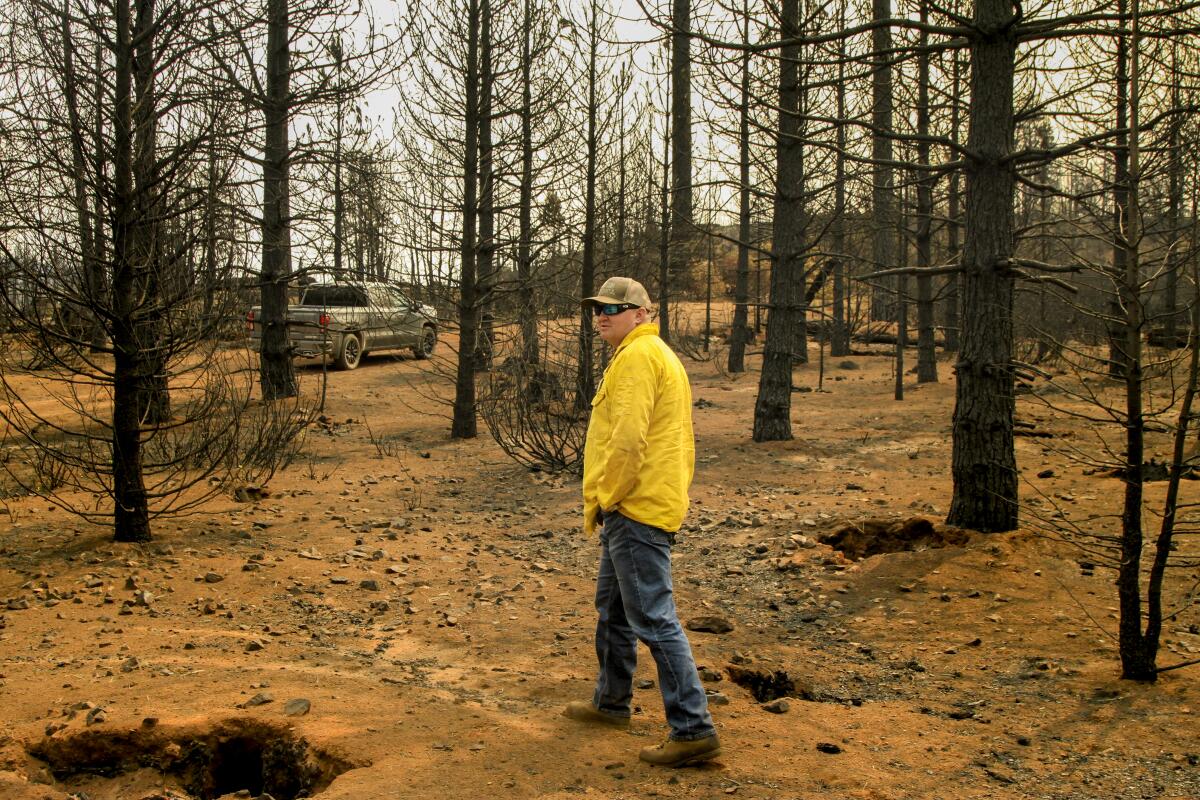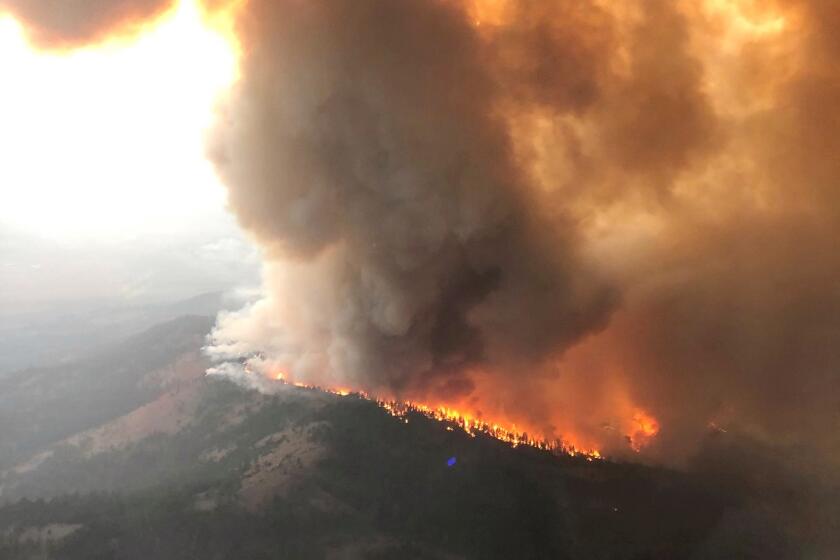Dixie fire charges north, forcing new evacuations as crews face ‘very concerning’ weather

- Share via
The monstrous Dixie fire, now burning for nearly two months, surged north on Wednesday, forcing residents to flee as the possibility of dry lightning and fierce winds threaten to intensify the blaze.
Propelled by bone-dry fuels, the blaze tore through forested areas and made a significant push toward the remote community of Old Station in Shasta County, prompting its mandatory evacuation, fire officials said.
Evacuation orders were also issued for those who live along roads between the Lassen Volcanic National Park entrance and the Bridge Campground, as well as residences along California 44.
Now 59% contained, the Dixie fire has swelled past 927,000 acres, “and it seems like we’re being challenged on a constant basis,” said Joshua Rubinstein, a public information officer for the fire.
The Dixie fire is primed to keep burning, officials said, even as crews turn a corner fighting the Caldor fire near South Lake Tahoe.
Aggressive fire behavior in the northwest corner of the blaze could be compounded by critical fire weather set to arrive Thursday.
A possibility of thunderstorms, gusty winds and low humidity prompted the National Weather Service to issue a red flag warning, which will go into effect 11 p.m. Thursday and last through 11 p.m. Friday.
Speaking at a briefing Thursday morning, Dixie fire incident meteorologist Benjamin Bartos said that, later in the day, it would “not be very nice when it comes to fire weather.”
A cold front arriving from the Pacific Northwest is forecast to bring a dramatic weather shift, including thunderstorms that carry the possibility of dangerous lightning strikes and gusty winds up to 45 mph, Bartos said.
Fast-moving storms could develop in the afternoon and will become more probable Thursday night and into Friday morning.
Bartos said there would be “a lot of potential” for dry lightning as the storms swept through. “There won’t be enough time for them to drop [precipitation] as they move through,” he said.
Officials fear lightning strikes amid vegetation desiccated by drought conditions will ignite new fires. And as winds arrives, distances for spotting — when embers fly and light fires ahead of the flames — are expected to increase dramatically.
The blaze on Wednesday threw a spot more than five miles out in front of the main body of flames, officials said.
Operations Section Chief Mike Wink said crews were facing “very, very concerning conditions over the next day and a half.”
Since igniting in the dense forest of Plumas County in mid-July, the blaze has ballooned to become the second-largest fire in California history. It is marching ever closer to 1 millions acres — a grim total only achieved by last year’s August Complex fire.
It’s one of 13 large wildfires raging in the state, including the Caldor fire, which has grown to just under 218,000 acres and has destroyed hundreds of homes.
Concerned about the potential for new fires amid already strained resources, the U.S. Forest Service shuttered all national forests in California through at least Sept. 17.
Weather and fire activity — existing blazes as well as possible new ones — could extend the closures, according to to Paul Wade, a public information officer with the Forest Service’s Pacific Southwest region.
“There’s a hope to lift it,” Wade said, “There is also a concern to extend it due to the weather threats.”
Wade said Forest Service officials were monitoring the situation daily, if not hourly, and weighing whether to alter the existing order.
Any extension of the closures would be made several days before the expected reopening, he said, “so the public can be informed and either adjust, plan or prepare accordingly.”
More to Read
Sign up for Essential California
The most important California stories and recommendations in your inbox every morning.
You may occasionally receive promotional content from the Los Angeles Times.












